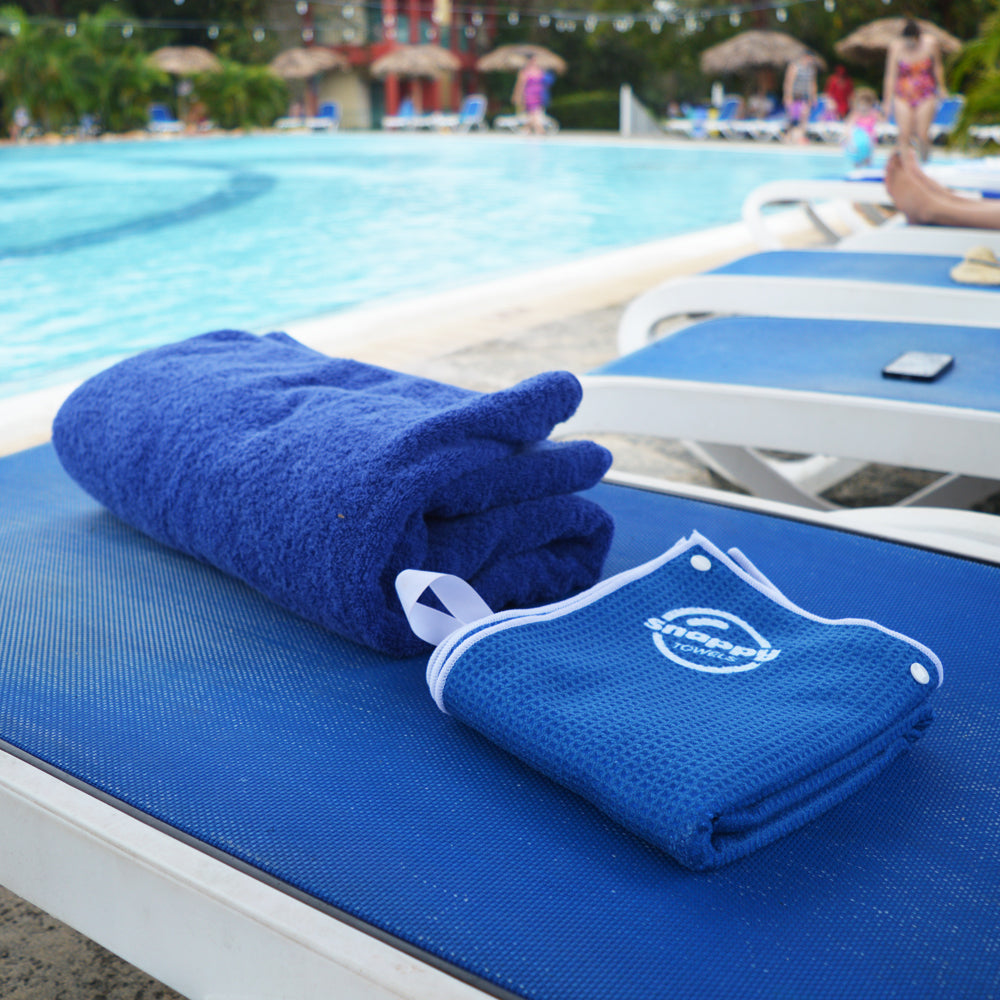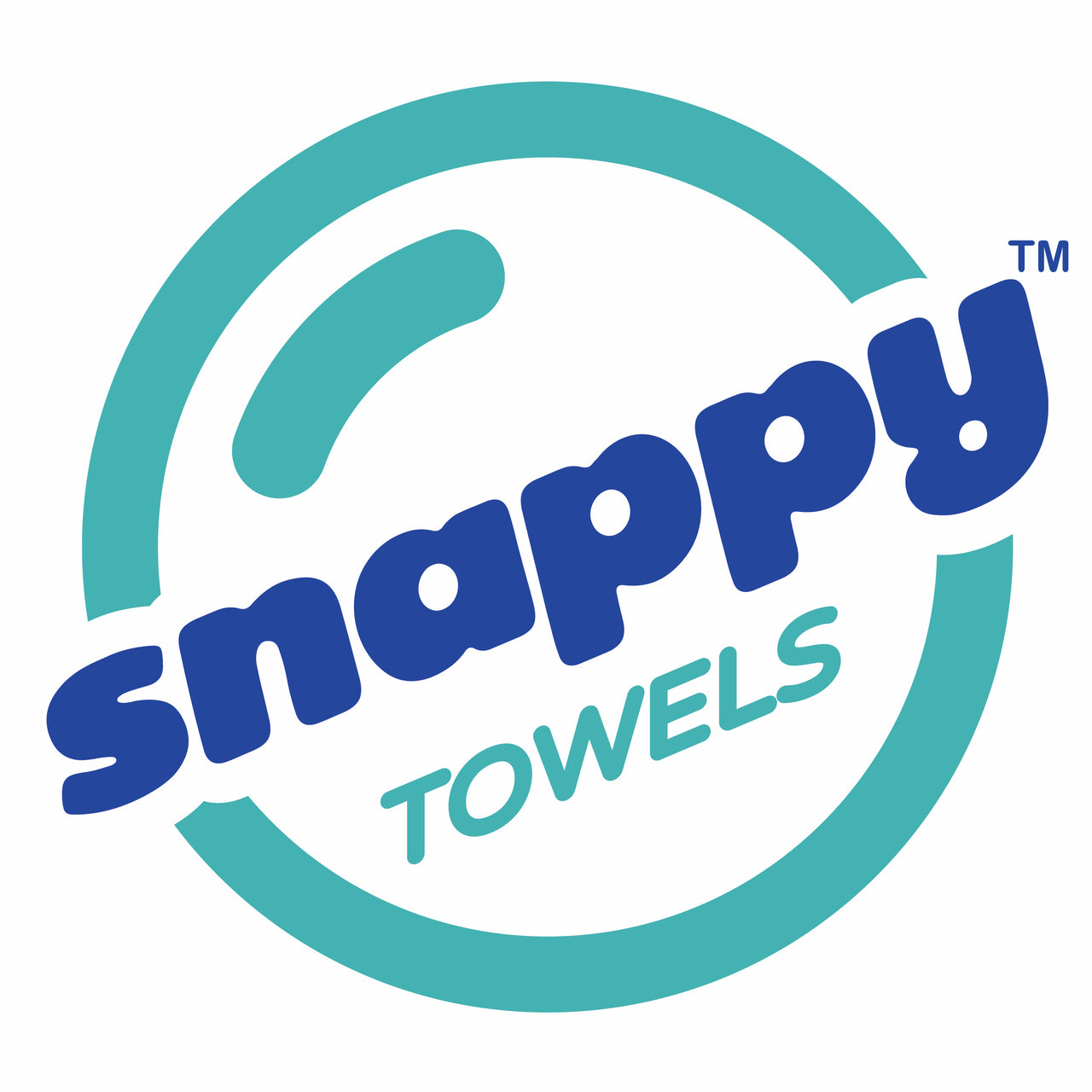
How to Choose The Best Towel: Microfiber, Cotton, Chamois?
We've all grown up with the usual cotton towels at home, but if you've been involved in sports like swimming, surfing, stand-up paddle boarding (SUP), scuba diving, water polo, kayaking or backpacking you've probably come across many different kinds of sports towels, gym towels, and other technical towels, and even yoga towels and compact travel towels.
In this article we explain some of the different towel fabrics and materials, why they are used for towels, and how to choose the best towels for your needs, whether it be for swimming, travel, camping, sports, or just some hi-intensity lounging by the beach or pool.
Shop Now
Cotton Towels
Hotels towels and spa towels are usually cotton towels because of the luxury and comfort they offer, and because compactness and portability are not factors here. Cotton is cheaper to replace and can be bleached over and over, which most synthetic fibers can't handle. Regular household towels are made of cotton and woven into terry (aka terrycloth) which means a fabric of tiny loops similar to a rug, but two-sided.
Beach towels are usually made of velour, which is simply a terrycloth cotton towel with the loops sheared off of one side. They are less puffy (more compact) than full terrycloth, and the sheared flat side is useful for printing designs on.
The drawback with cotton towels at the pool, gym or when traveling is that they get very heavy when wet (and cold) and take a long time to dry (the ability to hold water is why we use cotton for toweling, so dry time is a bit of a Catch 22). Another drawback with terrycloth cotton beach towels is that they can pick up a lot of sand, even with velour, because the loop side is used down on the sand.
Chamois Towels (Shammies)
Now, at the extreme other end of high-performance sports towels, you may have noticed divers in the Olympics using chamois towels. 'Chamois' refers to the type of fabric (the weave), and come in a soft felt-like finish (chamois or shammy) or a smoother finish.
One drawback with chamois towels is that they feel like you are rubbing yourself with wet blue jeans, and are not big enough to wrap up in like other towels, so have no value in keeping you warm other than to dry you off. If you are a diver or are into ultra-lightweight camping, a chamois towel might be the best towel for you due to its size and the fact that they dry off pretty quickly when wrung-out. They are strictly functional, however, so don't expect this to be anyone's favorite towel around the pool at home.
The actual material used in a chamois (shammy) towel is PVA (polyvinyl alcohol) which must be kept wet between uses, and so are sold in plastic cases. If too dry, they turn into a brittle cardboard-like texture, and if put away too wet, they will grow mildew. They are small, which makes them portable, but once inside their plastic carrying case they are no smaller than most microfiber towels.
Microfiber Beach Towels and Travel Towels

Microfiber towels are made of microfiber, which actually refers to any fiber which is smaller than the diameter of a silk thread. Microfiber towels are usually made of a polyester/polyamide (aka Polyester/Nylon) blend. There are numerous advantages of these fibers over cotton and PVA, which we'll go into in another post. As for toweling, the biggest reason why polyester/polyamide microfiber is used is due to its absorbency, which is a result of the material and the actual structure of the microfiber which gives it an enormous surface area, i.e. a very large absorptive surface in which to interact with water.
There are many different weaves or materials made from microfiber. One is suede microfiber which is smooth like the chamois mentioned above. Even in a bigger towel, smooth microfiber feels uncomfortable to use. Many people can't get past the feel, even though suede microfiber towels are compact and very portable. A full-sized bath towel or beach towel made from suede microfiber can fold up to about the size of a novel, so it's excellent for traveling if you can get used to the feel of it.
Microfiber thread can also be woven into terrycloth. This is a kind of hybrid towel because you have the absorptive properties of a microfiber woven into puffy, comfy loops like a traditional cotton towel. These are nice to use at home, but most aren't any better than a cotton towel if you are travelling, going to the pool, the gym, or the beach, etc. because terrycloth takes up a lot of room and doesn't fold into a compact space no matter what you weave it from.

The Best: Snappy Towels® Waffle Weave Microfiber Towels
Shop Now
We've chosen to make our microfiber towels from a textured waffle weave microfiber. This is the same polyester/polyamide blend microfiber that other swim, gym, travel and compact towels use, but with a texture to it. Waffle weave microfiber feels a lot like a traditional cotton towel because of this texture but is still compact because it's not made of terrycloth loops.
Waffle weave microfiber will give you a good comfy rub and also has enough thickness to make a comfy wrap, which is especially good if you are wearing the towel! Plus, it's sand-resistant, which is great for the beach or camping and makes a great surf towel.
A full-sized microfiber beach towel can fold up to about the size of a novel, so makes a great travel towel, but one that you'll actually be happy to use once you get where you're going because of the comfort it offers.
So there you are: the spectrum of towels from tiny and utilitarian to huge and fluffy; your 'just right' towel is in there somewhere, depending on your needs.
Shop Now
---
Watch Next: Microfiber swim towel review of Swim Travel Towel by competitive swimmer Swim Life Guru
